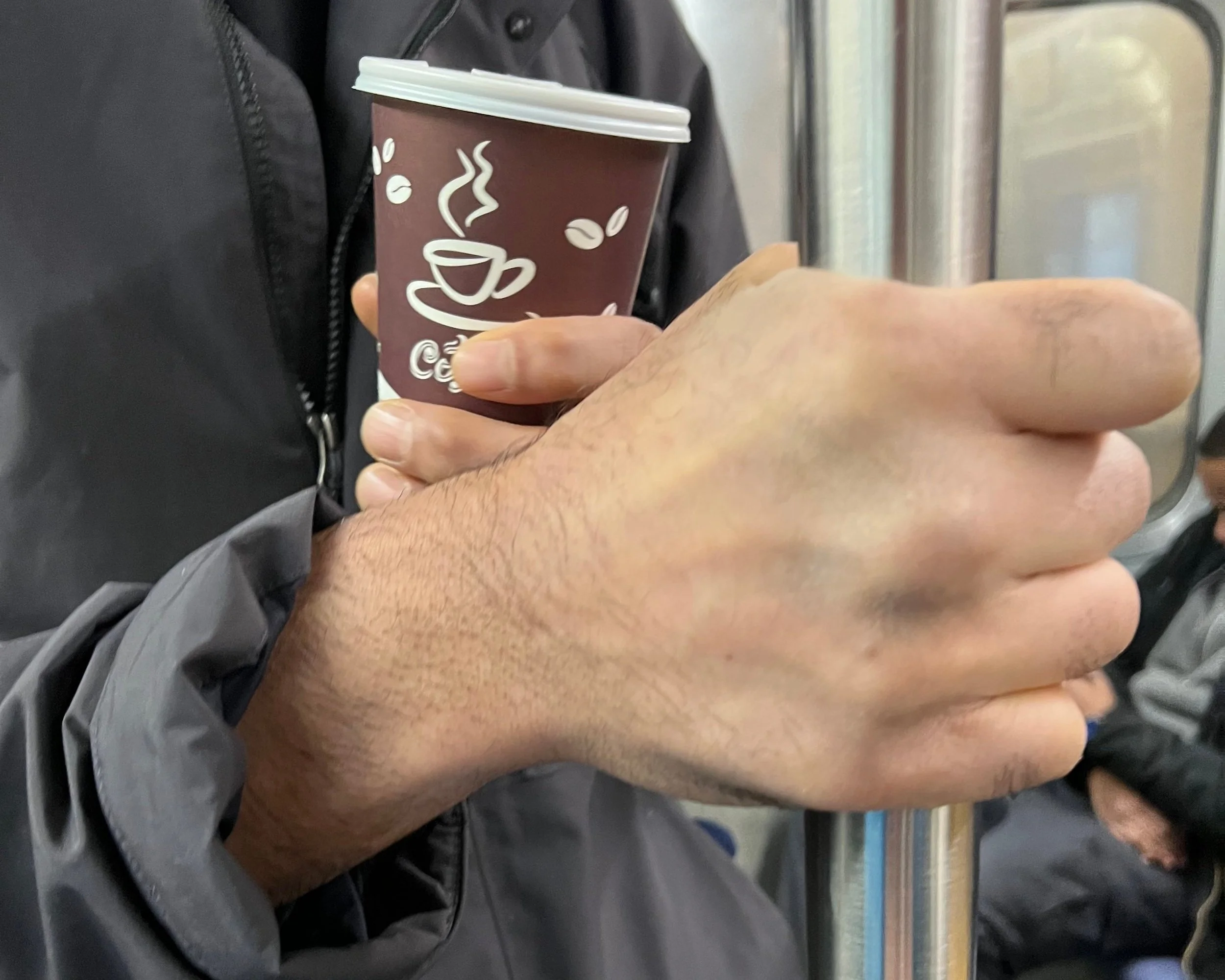From Queer Joy to Human Connection: An Artistic Exploration of Hands
Right hand holds subway handrail while left hand hold paper cup of coffee.
If you follow me on social media, you may have noticed a shift in my work toward figurative art, particularly focusing on hands. This evolution is actually a natural progression for me, as I tend to become focused on specific objects or themes. Lately, my interests have been pulling me toward people rather than nature, and the concepts of connection and separation have been heavy on my mind, especially as I navigate the complexities of being a queer person in today’s world.
Since coming out as nonbinary, I've often felt "othered" in comparison to my more monochromatic Midwest counterparts. And after my top surgery, I’ve oscillated between a fear of attack and a sense of power and pride—feelings rooted in my absolute experience of gender euphoria. It was from this space of joy and resistance that I created the Queer Joy monthly subscription, a way to share my joy and assert my identity.
The desire to create more queer-focused art began to swirl in my mind, much like a newly out teenager eager to share their newfound self-awareness. I wanted to be visible as a queer, nonbinary artist—visible in the way that only I could express through my work. But then, I found myself wondering: How do I even start that conversation?
After discussing the idea to create queer art with a friend, I was quickly reminded that, as a queer artist, I’ve always been making queer art. Duh. I decided to change my perspective. I don’t want to be "othered," nor do I want my work to be viewed as just "queer." I am more than that, and so is everyone else. This led me to think about how we are all connected—we are more alike than we are different. Gender is only one aspect of identity; it doesn’t define us.
My queerness certainly influences my work, but so does my environment, relationships, childhood, and all of my experiences. All of these elements contribute to who I am, just as they shape each of us as individuals. I wanted to create art that sparks a conversation about how, despite our differences, we share common struggles and joys— even though they may go by different names, make us human. This led me to hands as a subject matter.
Hands are second only to the face in terms of human connection. It’s so significant that in medical school, cadavers often cover the face and hands to help students disconnect the body from its humanity. Our hands connect us through touch, communication, tasks, and expression. You can see someone's life story in their hands—through wear, calluses, age, and strength. Even more powerful, hands hold no gender, sex, race, religion, or sexual orientation. They are the ultimate connector, the great equalizer.
Throughout this process, my thoughts on connection and separation have fluctuated. For a while, I was fixated on how we connect with one another, whether through touch or conversation. I had been focusing too much on intimacy, especially since I've been feeling disconnected and lacking intimacy in my own life. I almost gave up on the project altogether, but a recent trip to New York completely shifted my perspective.
In the Midwest, we’re often told that New York City is a cold, indifferent place where people don’t care about you, unsafe, and where friendliness is scarce. But that’s not entirely true and the prime example: the subway. Yes, people mostly keep to themselves, but I’ve received more compliments on my outfits and general energy there than anywhere else in my life. Everyone is doing their own thing, yet we’re all doing it together. We’re all holding on to the same handrails as the train jerks and shakes. That shared struggle—that collective humanity—is something beautiful.
The subway experience really brought me back to the heart of my original purpose: dismantling the idea of separateness. It's not about our individual interactions, but about recognizing the whole of our shared humanity. This is the space I find myself in with this project—focused on the collective, beyond our differences. In today’s climate, this can sometimes feel harder to embody, but it's what I want to see in the world. It’s the conversation I want to be part of.

